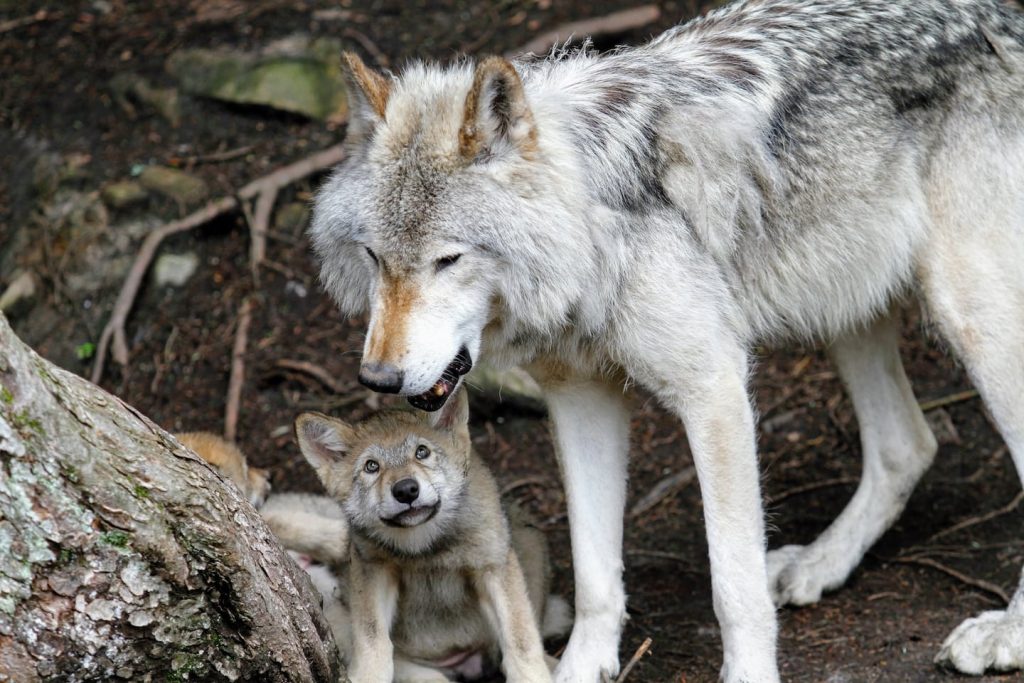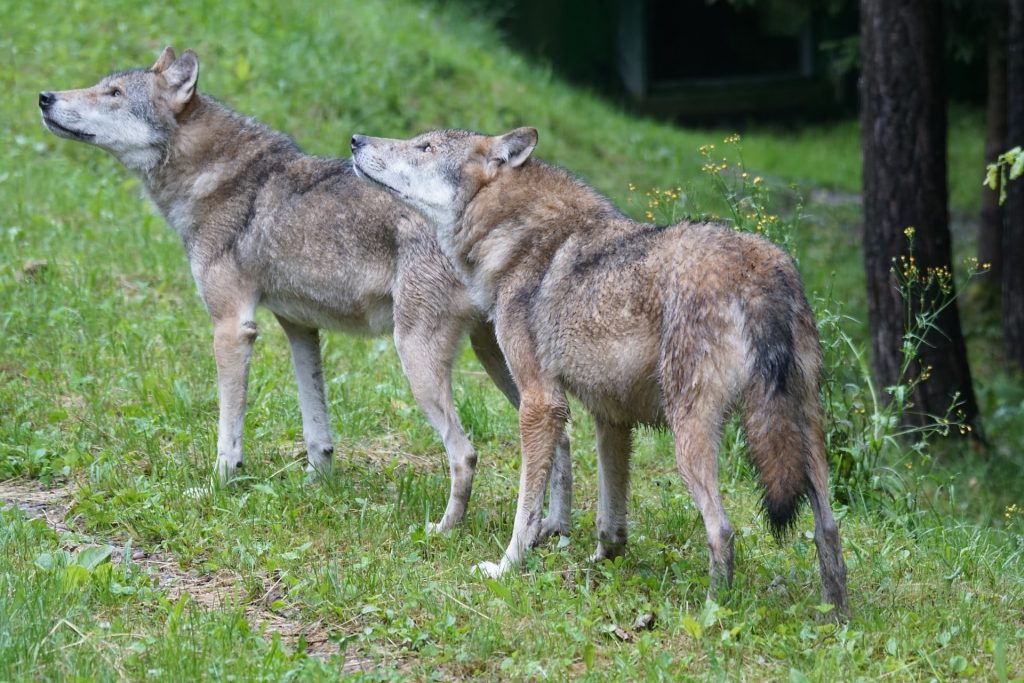There is only one true species of wolf in America: the gray (or timber) wolf. While they may be found in different colors—like white, red and black—the species is the same.
Wolves are not ‘human haters’ like portrayed to be in movies. Wolves’ insatiable thirst for human flesh is patently false. In 500 years (yes, 500) there has been only one recorded human killed by a wolf and that wolf was rabid.

Roughly 65 to 70 years ago, it was commonly thought that in order to have more deer and elk, you must eradicate the predators—namely wolves. Nothing could be further from the truth. Plenty of research has proven that wolves are a vital part of any successful ecosystem.
With the reintroduction of wolves in Yellowstone National Park, researchers witnessed the ecological phenomena known as the trophic cascade. Without predators, prey such as elk had changed their behavior and negatively altered other parts of the ecosystem such that only one beaver colony remained in the park. Without wolves preying on elk, elk herds would forage along streams among willows, destroying the willow habitat. Without willow, a primary food source for the beaver, it was difficult for beavers to repopulate. Once the wolves returned, elk needed to go deeper into the woods during the winter to decrease vulnerability, leaving willow stands alone. Today there are nine beaver colonies in Yellowstone.

As wolves return to an ecosystem, other animal groups also benefit. Wolf kills, such as elk, feed grizzlies as grizzlies chase off wolves to feed. Beaver colonies help streams; streams become more abundant with fish, and bears forage for fish. The presence of wolf packs means fewer coyotes. Fewer coyotes equal more rodents. More rodents equal more raptors such as osprey, hawks, owls, and eagles.
Not to worry about the elk either. They protect their numbers by creating small, more maneuverable herds to avoid wolves. Their numbers are nearly identical to what they were when no wolves were around.
As another example of wolves benefitting the ecosystem, since wolves were reintroduced in Wisconsin, the deer population nearly doubled from 1963 to 1993.
Where Are They?

Alaska
You can’t swing a dead caribou around your head without hitting a spot where wolves can be found. There are an estimated 7,500-10,000 wolves in Alaska.
Arizona
A subspecies of the timber wolf, the Mexican Grey Wolf—through an agreement between Mexico and the United States—was recently reintroduced in Arizona. There are around 50 in the entire state.
Idaho
Idaho attempts to manage its own population by having an annual harvest/killing. In this vast western state, they have somewhere in the neighborhood of 750 wolves.
Michigan
Yes, Northern Michigan has wolves. They sit somewhere around 600 wolves, all of which are in the Upper Peninsula.
Minnesota
Minnesota once sheltered the last remaining wolves in the contiguous 48 states. Now the state has a thriving population of around 2,000 wolves. Most are located in the upper northern part of the state, near the Canadian border like on the gorgeous Gunflint Trail.
Montana
Montana is another state working to self-manage its wolf population. In spite of Montana being our third largest state, the state only has around 500 wolves.
New Mexico
The same reintroduction program as Arizona is being practiced in New Mexico. They have around 50 wolves as well.
North Carolina
In the eastern forest of North Carolina there are a few packs with an estimated 45 wolves. These wolves are a subspecies known as the red wolf.
Oregon
The wolves in Oregon are in the eastern section of the state. The population is around 100. In parts of Oregon wolves are under federal protection.
Washington
Very few wolves reside in Washington. There are only about 80 and all are situated in the upper northeastern part of the state. These wolves have all emigrated from Idaho.
Wisconsin
In northern Wisconsin, mostly along the counties adjacent to Lake Superior, there are approximately 750 wolves.
Wyoming
Mostly situated in the Greater Yellowstone Ecosystem, Wyoming’s wolf population is around 350. If you’re super patient, your best odds of finding them is in Lamar Valley as they follow Soda Butte Creek down from the Abasorka Mountain range.

Other States
Unsubstantiated (as well as confirmed) sightings have been in California, Utah, Colorado, North Dakota, South Dakota, plus half-breeds (coyote/wolf or Coywolf) in Illinois. Most of the sightings are in the northern sections of their respective states, with the exception of Utah where they have been seen in both northern and southern sections. However, there are no known breeding packs in these states.
Have any sightings you’d like to share or photos? Leave us a comment!








